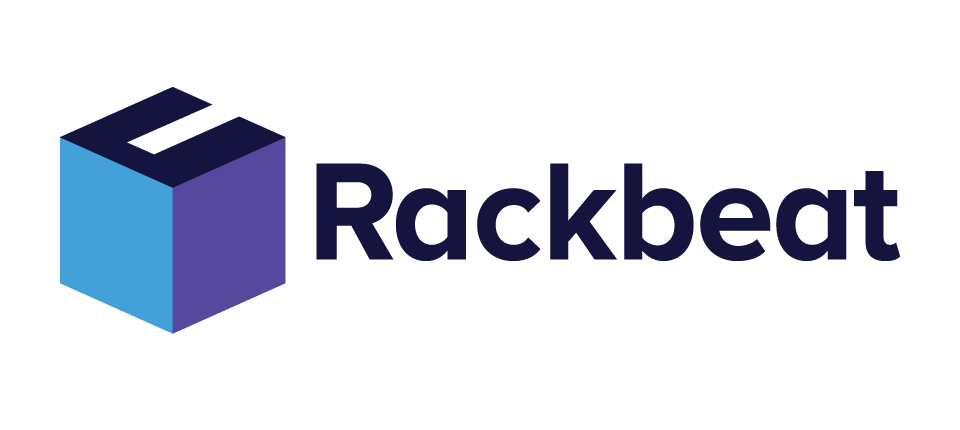
Integration between Ongoing WMS and Rackbeat
Rackbeat is a lightweight, webbased Warehouse Management System (WMS) and is often used as the warehouse module for the Visma software suite. Ongoing has developed an integration between Rackbeat and Ongoing WMS designed for those that need smart warehouse functionalities such as scanning, batchpicking of orders, detailed warehouse maps, and many more features. Moreover, with this integration you can easily outsource your logistics to a fulfillment provider (3PL) that uses Ongoing WMS.
Get started with a FREE trial of Ongoing WMS today!
Table of contents
Getting started
- The Rackbeat API requires an API token. To create tokens, login to Rackbeat, go to settings and find the API menu. Then create a new API token.
- Insert the API token in Ongoing WMS by navigating to the page Integrations by choosing Rackbeat in the list of integrations that appear when clicking the button New integration.
-
Besides an API key the integration also requires:
- Location in Rackbeat that corresponds to the warehouse using Ongoing WMS
Note: The selected location will be used to ensure that the integration will only fetch order lines and purchase order lines marked for that specific location in Rackbeat. This way the integration ensures it will only work with the lines that are meant for the warehouse. The location is also used if the stock sync is activated to ensure the integration updates the quantity in the correct location.
Scheduled functions
Some functions in the integration run on a schedule. Products, orders and purchase orders are synced automatically from Rackbeat to Ongoing WMS.Product
Products are read automatically from Rackbeat to Ongoing WMS. If a change is made in Rackbeat, it will be reflected automatically in Ongoing WMS.
Field mapping
| Ongoing WMS field name | Rackbeat field name |
|---|---|
| Article ⇒ Article number | Product ⇒ Number |
| Article ⇒ Barcode | Product ⇒ Barcode |
| Article ⇒ Customer price | Product ⇒ Sales price taxful |
| Article ⇒ Description | Product ⇒ Description |
| Article ⇒ Article group ⇒ Name | Product ⇒ Group ⇒ Name |
| Article ⇒ Article group⇒ Number | Product ⇒ Group ⇒ Number |
| Article ⇒ Height | Product ⇒ Physical ⇒ Height |
| Article ⇒ Is batch article | Product ⇒ Batch control ⇒ Is active |
| Article ⇒ Is serial number article | Product ⇒ Serial numbers ⇒ Is active |
| Article ⇒ Length | Product ⇒ Physical ⇒ Length |
| Article ⇒ Link to picture | Product ⇒ Picture URL |
| Article ⇒ Main supplier | Product ⇒ Default supplier |
| Article ⇒ Name | Product ⇒ Name |
| Article ⇒ Weight | Product ⇒ Physical ⇒ Weight |
| Article ⇒ Width | Product ⇒ Physical ⇒ Width |
Filters
By default, all products that have been updated in Rackbeat since the last time the integration ran will be synced to Ongoing WMS.
Orders
Orders are read automatically from Rackbeat to Ongoing WMS.
Field mapping
| Ongoing WMS field name | Rackbeat field name |
|---|---|
| Order info ⇒ Goods owner order ID | Order ⇒ Number |
| Order info ⇒ Order number | Order ⇒ Number |
| Order info ⇒ Customs ⇒ Customs value currency code | Order ⇒ Currency |
| Order info ⇒ Delivery date | Order ⇒ Delivery date |
| Order info ⇒ Delivery instruction | Order ⇒ Delivery terms |
| Order info ⇒ Invoice number | Order ⇒ Our reference ⇒ Number |
| Order info ⇒ Reference number | Order ⇒ Our reference |
| Order info ⇒ Terms of payment | Order ⇒ Payment terms ⇒ Name/Description/Id |
| Customer ⇒ Name | Order ⇒ Delivery customer name + Delivery customer name2 |
| Customer ⇒ Address | Delivery address ⇒ Street |
| Customer ⇒ Address2 | Delivery address ⇒ Street2 |
| Customer ⇒ City | Delivery address ⇒ City |
| Customer ⇒ Country code | Extracted from Delivery address ⇒ Country |
| Customer ⇒ Post code | Delivery address ⇒ Zip code |
| Customer ⇒ Email | Delivery address ⇒ Email |
| Customer ⇒ Mobile phone | Delivery address ⇒ Phone |
| Customer ⇒ Notify by email | True if Delivery address ⇒ Email is non-empty |
| Customer ⇒ Notify by SMS | True if Delivery address ⇒ Phone is non-empty |
| Customer ⇒ Invoice address ⇒ Address | Billing address ⇒ Street |
| Customer ⇒ Invoice address ⇒ Address2 | Billing address ⇒ Street2 |
| Customer ⇒ Invoice address ⇒ City | Billing address ⇒ City |
| Customer ⇒ Invoice address ⇒ Country code | Extracted from Billing address ⇒ Country |
| Customer ⇒ Invoice address ⇒ Post code | Billing address ⇒ Zip code |
| Customer ⇒ Invoice address ⇒ Email | Billing address ⇒ Email |
| Customer ⇒ Invoice address ⇒ Mobile phone | Billing address ⇒ Phone |
| Order line ⇒ Article Number | Order line ⇒ Item ⇒ Number |
| Order line ⇒ Customer line price | Order line ⇒ Total incl. VAT |
| Order line ⇒ Order line total customs value | Order line ⇒ Total incl. VAT |
| Order line ⇒ Product code | Order line ⇒ Item ⇒ Number |
| Order line ⇒ External Order line ID | Order line ⇒ ID |
| Order line ⇒ Number of Items | Order line ⇒ Quantity |
Filters
By default, all booked orders that have been updated in Rackbeat since the last time the integration ran will be synced to Ongoing WMS. The order rows will be limited to those that corresponds to the location selected on the integration page in Ongoing WMS to ensure that the warehouse only picks the rows they are meant to pick.
| Rackbeat field name | Default filter |
|---|---|
| Order ⇒ Booked | True |
| Order ⇒ Last change time | Later than the last time the integration synced |
| Order row ⇒ Location | The location selected on the integrations page |
Purchase orders
Purchase orders are read automatically from Rackbeat to Ongoing WMS.
Field mapping
| Ongoing WMS field name | Rackbeat field name |
|---|---|
| Order info ⇒ Order number | Purchase order ⇒ Number |
| Order info ⇒ Order Remark | Purchase order ⇒ Note |
| Order info ⇒ Reference number | Purchase order ⇒ Your reference id |
| Order info ⇒ Order date | Purchase order ⇒ Created at |
| Supplier ⇒ Number | Purchase order ⇒ Supplier ⇒ Number |
| Supplier ⇒ Name | Purchase order ⇒ Supplier ⇒ Name |
| Supplier ⇒ Address ⇒ Name | Purchase order ⇒ Supplier ⇒ Name |
| Supplier ⇒ Address ⇒ Address | Purchase order ⇒ Supplier ⇒ Address street |
| Supplier ⇒ Address ⇒ Address2 | Purchase order ⇒ Supplier ⇒ Address street 2 |
| Supplier ⇒ Address ⇒ City | Purchase order ⇒ Supplier ⇒ Address city |
| Supplier ⇒ Address ⇒ Country code | Purchase order ⇒ Supplier ⇒ Address country |
| Supplier ⇒ Address ⇒ Post code | Purchase order ⇒ Supplier ⇒ Address zip code |
| Supplier ⇒ Address ⇒ Email | Purchase order ⇒ Supplier ⇒ Contact email |
| Supplier ⇒ Address ⇒ Telephone | Purchase order ⇒ Supplier ⇒ Contact phone |
| Supplier ⇒ Address ⇒ Mobile | Purchase order ⇒ Supplier ⇒ Contact phone |
| Supplier ⇒ Group ⇒ Code | Purchase order ⇒ Supplier ⇒ Group ⇒ Number |
| Supplier ⇒ Group ⇒ Name | Purchase order ⇒ Supplier ⇒ Group ⇒ Name |
| Order line ⇒ Article Name | Purchase order line ⇒ Item ⇒ Name |
| Order line ⇒ Article Number | Purchase order line ⇒ Item ⇒ Number |
| Order line ⇒ Currency code | Purchase order ⇒ Currency |
| Order line ⇒ Product Code | Purchase order line ⇒ Item ⇒ Number |
| Order line ⇒ External Order line code | Purchase order line ⇒ ID |
| Order line ⇒ Number of Items | Purchase order line ⇒ Quantity |
| Order line ⇒ Row price | Purchase order line ⇒ Line total incl. VAT |
Filters
By default, all booked and not yet received purchase orders that have been updated in Rackbeat will be synced to Ongoing WMS. The purchase order rows will be limited to those that corresponds to the location selected on the integration page in Ongoing WMS to ensure that the warehouse is only advised to receive the rows they are meant to receive.
| Rackbeat field name | Default filter |
|---|---|
| Purchase order ⇒ Is booked | True |
| Purchase order ⇒ Is received | False |
| Purchase order ⇒ Last change time | Later than the last time the integration synced |
| Purchase order row ⇒ Location | The location selected on the integrations page |
Functions based on user actions
Outbound deliveries
When an order has been set to status Sent or Collected in Ongoing WMS a call is sent to the Rackbeat API to creata shipment with the picked amount. It is possible to partially pick orders.
Inbound deliveries
When a delivery is made to the warehouse, this will be recorded on a purchase order. This triggers a creation of a purchase receipt in Rackbeat, where the received amount for each purchase order line will be updated. The default behavior is that the trigger will fire when the purchase order is completed. To allow immediate updates to Rackbeat, please contact Ongoing. It is possible to partly receive a purchase order.
Stock synchronization
By activating the stock synchronization the stock in the integration any inventory adjustments made in Ongoing WMS will be recreated in Rackbeat. Note that this only syncs adjustments, and not absolute quantities. That means that it is importat to ensure that the stock in Rackbeat is the same as in Ongoing WMS when activating the integration.
Note: The information on this page might differ from your integration if any special requests were made during the implementation of the integration.
Companies using this integration
Some of the companies using the integration between Rackbeat and Ongoing WMS:
